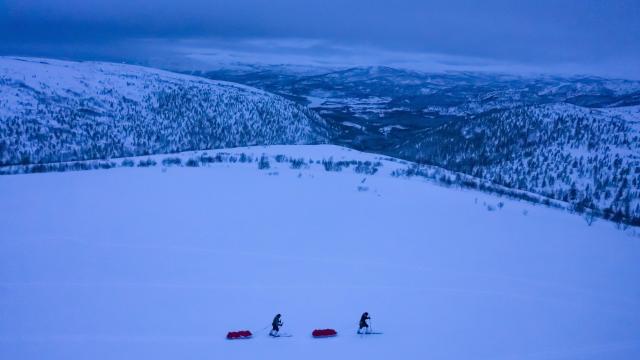Scientists are taking to the skies to study methane emissions in the Arctic. In a series of more than 400 aeroplane rides in 2017, researchers with NASA’s Arctic Boreal Vulnerability Experiment discovered 2 million methane hotspots.
The findings point to one of the more disturbing aspects of climate change in the Arctic as frozen soil thaws, releasing greenhouse gases into the atmosphere. Frankly, I’m shook.
The team documented their findings in a paper published in Geophysical Research Letters on Monday. They equipped planes with infrared technology that can detect methane hotspots, which the team defined as an area with 3,000 parts per million of methane in the air. In total, the scientists covered 51,800 square kilometres of land and took roughly 1 billion observations.
This technology has been used to find methane leaks from manmade infrastructure such as gas plants, but this is the first time this type of technology has been used in the Arctic, where scientists always struggle to gather observational data because, well, it’s cold and remote.
The NASA scientists discovered that most of these hotspots are closest to bodies of water, which are commonly where hotspots are found since flowing water can cut into frozen soils. But the researchers found a curious quirk: Most hotspot concentrated within 44 yards of waterways, a threshold they’re still working to understand. They were able to confirm this during an on-the-ground excursion in 2018 to two lakes.
This is cause for serious concern. The Arctic is warming at an accelerated rate, and it’s causing frozen layers of soil—called permafrost—to melt. All this is due to climate change, but this feedback loop of melting permafrost makes things dramatic worse because that’s where the Arctic’s methane hides. And methane is a powerful greenhouse gas: It carries a global warming potential that is some 30 times the potential of carbon dioxide over 100 years.
As more gets released into the atmosphere, the world will warm even further. It could create runaway climate change, though how close we are to a tipping point is still an area of active, intense research. But there are signs of change afoot outside what the NASA scientists found. Last year’s Arctic Report Card found that the region is now emitting carbon dioxide, another byproduct of the permafrost thaw.
In addition to threatening the climate, thawing soil is also causing huge problems for infrastructure in the Arctic. Up to a third of all the buildings in the region could be in trouble by mid-century.
The data collected on the 2017 flights should help better inform the models climate scientists use to predict the impact these hotspots may have on the climate crisis. And understanding that will be key to understanding what we’re all in for.
